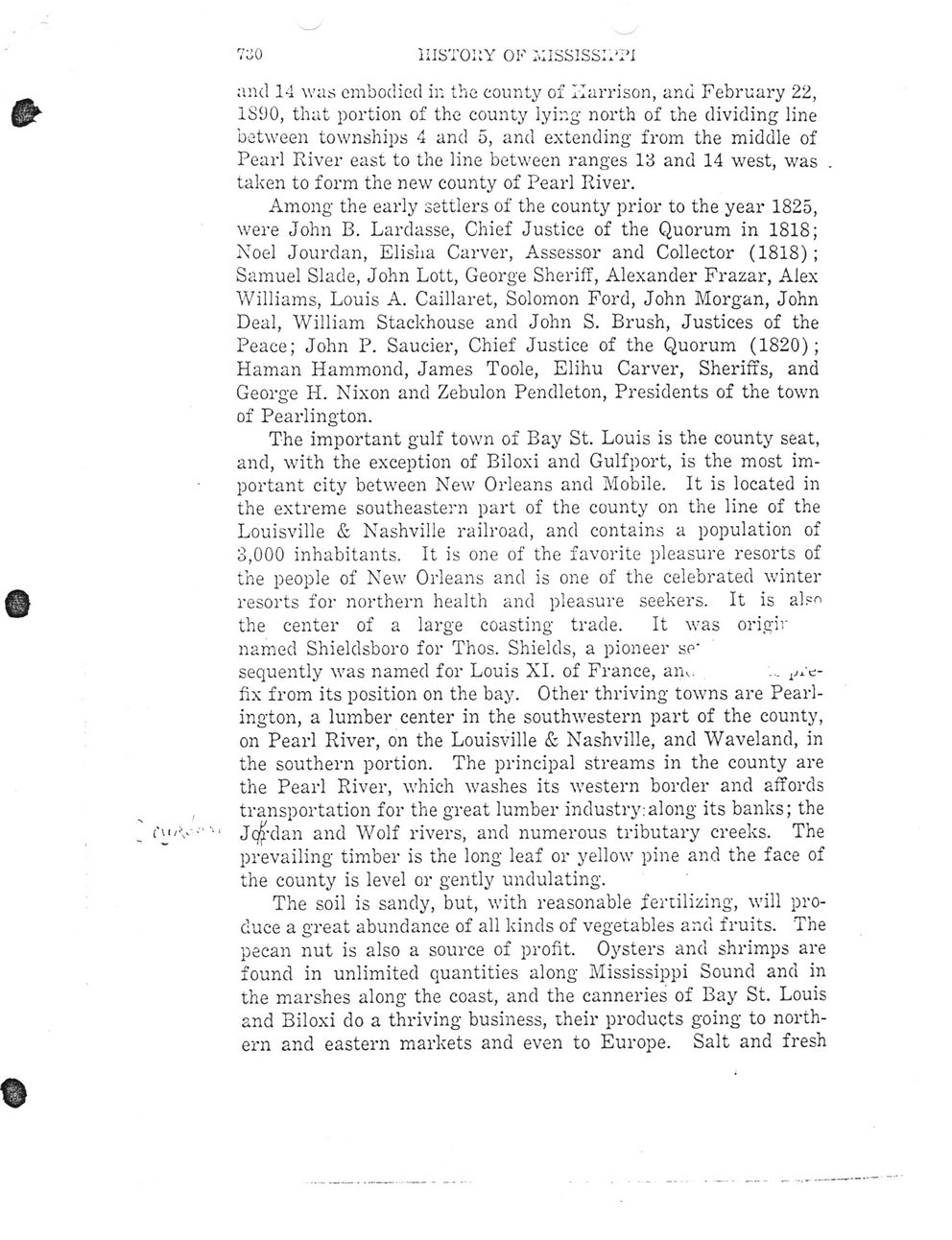This text was obtained via automated optical character recognition.
It has not been edited and may therefore contain several errors.
7o0 1IIST0HY OF IuISSISSL'IM and 14 was embodied in the county of Harrison, and February 22, 1890, that portion of the county lying north of the dividing line between townships 4 and 5, and extending from the middle of Pearl River east to the line between ranges 13 and 14 west, was taken to form the new county of Pearl River. Among the early settlers of the county prior to the year 1825, were John B. Lardasse, Chief Justice of the Quorum in 1818; Noel Jourdan, Elisha Carver, Assessor and Collector (1818); Samuel Slade, John Lott, George Sheriff, Alexander Frazar, Alex Williams, Louis A. Caillaret, Solomon Ford, John Morgan, John Deal, William Stackhouse and John S. Brush, Justices of the Peace; John P. Saucier, Chief Justice of the Quorum (1820); Haman Hammond, James Toole, Elihu Carver, Sheriffs, and George H. Nixon and Zebulon Pendleton, Presidents of the town of Pearlington. The important gulf town of Bay St. Louis is the county seat, and, with the exception of Biloxi and Gulfport, is the most important city between New Orleans and Mobile. It is located in the extreme southeastern part of the county on the line of the Louisville & Nashville railroad, and contains a population of 3,000 inhabitants. It is one of the favorite pleasure resorts of the people of New Orleans and is one of the celebrated winter resorts for northern health and pleasure seekers. It is also the center of a large coasting trade. It was origir named Shieldsboro for Thos. Shields, a pioneer se‘ sequently was named for Louis XI. of France, an*.. ... fix from its position on the bay. Other thriving towns are Pearlington, a lumber center in the southwestern part of the county, on Pearl River, on the Louisville & Nashville, and Waveland, in the southern portion. The principal streams in the county are the Pearl River, which washes its western border and affords transportation for the great lumber industry:along its banks; the (*u /V •” 'l 1 Jqjrdan and Wolf rivers, and numerous tributary creeks. The prevailing timber is the long leaf or yellow pine and the face of the county is level or gently undulating. The soil is sandy, but, with reasonable fertilizing, will produce a great abundance of all kinds of vegetables and fruits. The pecan nut is also a source of profit. Oysters and shrimps are found in unlimited quantities along Mississippi Sound and in the marshes along the coast, and the canneries of Bay St. Louis and Biloxi do a thriving business, their products going to northern and eastern markets and even to Europe. Salt and fresh

Hancock County 1 History-of-Mississippi-book-(038)